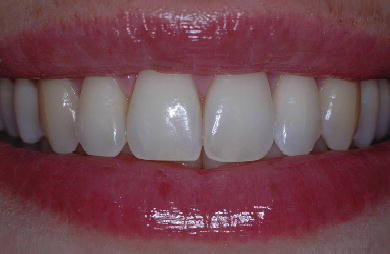7
Conclusion
The perception of beauty continually varies over time. Nowadays, facial beauty is based more on today’s “make-up” than on natural beauty. However, in our generation, among the facial criteria of beauty, a perfect smile has become a major feature and offers many advantages for the person wearing the smile.
Every individual has unique facial characteristics, including those of their smiles. According to the definition of esthetics, a smile is something very personal, relating directly to that person’s facial structure, gender, style, and character. Esthetic dentists should not be limited or restricted by specific requirements but, rather, should consider them as useful guidelines for creating a smile that best suits that particular patient’s personal needs.
Clinicians can no longer content themselves with purely practical procedures. Esthetics must be taken into account in comprehensive oral therapy. Due to this paradigm shift, esthetic dentistry can now deliver increasingly predictable and natural results. Not only that, but a more complete understanding of the components behind an esthetic smile – precise anatomical, functional, and biological integration – has caused clinicians to make achieving this precision a prerequisite for any successful treatment. The latest trends in dentistry tend toward minimally invasive options that will cause the least possible tissue disruption. This is challenging, but well worth the effort.
Therefore, the purpose of modern dentistry is to achieve the best possible result with minimal tissue invasion and time, giving the patient a beautiful smile, with a long-term predictable result, and without prejudicing the integrity of the structure of the remaining teeth (Fig. 7.1). Furthermore, when a smile needs to be redesigned, the clinician should have the competence to evaluate and integrate this smile into the harmony of the face.
Figure 7.1 The ideal gingival smile of a beautiful young woman.

In order to be esthetically pleasing, a comprehensive oral treatment must take into account both hard and soft tissues, after establishing a proper diagnosis that takes the local and general risk factors into consideration. The highest goal of perio-implantology and restorative dentistry is to achieve – through periodontal plastic surgery, resective (Figs 7.2a, b) or additive (Figs 7.3a–d), and implant surgical and prosthetic manipulation (Figs 7.4a, b) – an esthetic and harmonious gingival contour around a beautiful restoration. It is not easy to attain this goal; nor is the “how” immediately obvious. Peri-implant esthetic stability is a complex issue, due to the number of factors that have to be taken into account. It is therefore imperative that the esthetics of peri-implant treatments be biologically and scientifically based. Two of the main difficulties to be overcome are the phenomenon of crestal bone loss and the relative fragility of peri-implant soft tissues. However, osseous and mucosal remodeling can be minimized by adher/>
Stay updated, free dental videos. Join our Telegram channel

VIDEdental - Online dental courses


